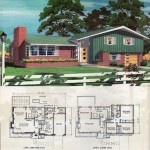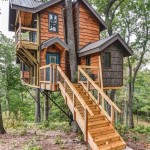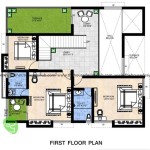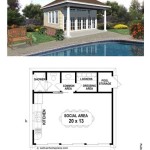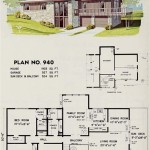Wood Frame Greenhouse Plans: A Guide to Building Your Own Green Oasis
A greenhouse provides year-round gardening opportunities, allowing you to grow a bounty of fruits, vegetables, and flowers regardless of the season. Building your own greenhouse can be a rewarding project, offering control over design, materials, and budget. Wood frame greenhouses are a popular choice due to their affordability, versatility, and aesthetic appeal. This article provides a comprehensive guide to wood frame greenhouse plans, covering key aspects of design, construction, and maintenance.
1. Planning Your Greenhouse
Before starting construction, careful planning is essential to ensure your greenhouse meets your needs and local regulations. Consider the following factors:
- Size and Shape: The size of your greenhouse depends on the plants you intend to grow. A smaller greenhouse may be suitable for starting seeds or growing herbs, while a larger one is ideal for vegetables or larger plants. Common shapes include rectangular, lean-to, and dome-shaped, each offering specific advantages and drawbacks.
- Location: Choose a location with adequate sunlight exposure, ideally facing south for optimal solar gain. Consider proximity to water sources, drainage, and wind protection.
- Budget: Determine a budget for materials, labor, and any necessary permits. Research different materials and construction methods to find cost-effective solutions.
- Climate: The climate in your area will influence the type of greenhouse design and materials used. Consider factors like heat retention, ventilation, and insulation.
- Growing Needs: Research the specific growing requirements of the plants you intend to cultivate, such as light, temperature, and humidity. Design your greenhouse accordingly to meet their needs.
2. Choosing the Right Wood Frame
The wood frame serves as the foundation of your greenhouse, providing structural support and durability. Here are some factors to consider when selecting wood:
- Wood Type: Pressure-treated lumber is highly recommended for outdoor applications, resisting rot, decay, and insect infestations. Other durable options include cedar, redwood, and Douglas fir. Consider the strength and weathering resistance of the chosen wood.
- Dimensions: Select lumber with appropriate dimensions for the desired greenhouse size and design. For larger structures, consider using thicker beams for added strength.
- Treatment: Pressure-treated lumber is treated with chemicals to protect against rot and insects. Ensure the treatment is environmentally friendly and safe for your plants.
- Cost: Compare costs of different wood types and treatments to find a balance between quality and budget.
3. Selecting the Right Greenhouse Covering
The greenhouse covering plays a crucial role in regulating temperature, light, and humidity. Several options are available, each with unique properties:
- Glass: Glass is a traditional and effective covering, offering excellent light transmission and durability. However, it can be heavy and prone to breakage.
- Polyethylene Film: Polyethylene film is a lightweight and affordable option available in various thicknesses. It provides good light transmission but has a shorter lifespan than glass.
- Polycarbonate Panels: Polycarbonate panels are strong, lightweight, and offer excellent light diffusion. They are shatter-resistant and provide good insulation.
- Acrylic Panels: Acrylic panels are clear, lightweight, and provide good light transmission. They are more expensive than polyethylene film but offer greater durability.
4. Building the Greenhouse Frame
Building the frame requires accurate measurements and precise cuts. Follow these steps:
- Cut the lumber: Use a saw to cut the wood according to the plans you've designed. Ensure all cuts are precise for a strong and stable structure.
- Assemble the frame: Join the lumber pieces using screws, bolts, or nails. Use a level to ensure all sections are straight and square.
- Install supports and bracing: Add vertical supports to the frame to provide extra strength and stability, especially for taller greenhouses. Use bracing to prevent the frame from sagging or warping.
- Attach the foundation: Secure the frame to the foundation using appropriate fasteners. Consider using concrete footings or a raised platform for added durability.
5. Installing the Greenhouse Covering
Once the frame is complete, you can install the covering material. The specific method will vary depending on the chosen material:
- Glass: Glass panes are typically secured to the frame using glazing clips and putty. Use a spacer to create a gap between the glass and the frame for ventilation.
- Polyethylene Film: Polyethylene film can be stapled or secured to the frame using special clips. Ensure the film is taut and free of wrinkles.
- Polycarbonate Panels: Polycarbonate panels are typically attached to the frame using screws or clips. Use a sealant to prevent leaks.
- Acrylic Panels: Acrylic panels are usually secured to the frame using screws or clips. Ensure a tight seal to prevent leaks.
6. Adding Interior Features
Once the covering is installed, you can add interior features to enhance functionality and create a comfortable growing environment:
- Bedding: Use a base of topsoil, compost, or a combination of both to provide a suitable growing medium for your plants. Consider adding drainage layers to prevent waterlogging.
- Shelving and Benches: Install shelves and benches to provide growing space for plants of different sizes. Choose materials that are durable and easy to clean.
- Ventilation: Install vents and windows to regulate temperature and humidity. Consider using fans for improved air circulation.
- Heating and Cooling: Depending on your climate, you may need to install heating and cooling systems to maintain optimal temperatures for plant growth.
- Lighting: If natural light is insufficient, consider adding supplemental lighting systems to provide adequate light for photosynthesis.
7. Maintaining Your Wood Frame Greenhouse
Regular maintenance is essential for the longevity and performance of your greenhouse. Follow these tips:
- Inspect the frame: Periodically check for signs of rot, decay, or insect damage. Repair or replace any damaged sections promptly.
- Clean the covering: Regularly clean the greenhouse covering to remove dirt and debris, ensuring optimal light transmission.
- Maintain ventilation: Ensure vents and windows are functioning correctly to provide adequate air circulation. Consider using fans for improved ventilation.
- Control pests and diseases: Monitor for signs of pests and diseases and take appropriate measures to prevent infestation and spread.
- Winterize your greenhouse: In colder climates, take steps to protect your greenhouse from harsh weather conditions. Consider using insulation, heating systems, and snow removal techniques.

Greenhouse Plans Easy 8 X 9 Framed Gabled Build

12 Diy Greenhouse Plans For Gardeners On A Budget Bob Vila

Best Diy Greenhouse Blueprints Kits And Plans

5 Wooden Greenhouses For Your Backyard

9 X 16 Greenhouse Plans Polycarbonate Covered Cedar Wood Frame Designed To Handle High Winds Hail Heavy Snow Loads 8 Roof Vents

Free Greenhouse Plans Howtospecialist How To Build Step By Diy

Best Diy Greenhouse Blueprints Kits And Plans

8x10 Wood Greenhouse Plans Myoutdoorplans

Plans Wooden Greenhouse Free Wood Projects Chair Build A Greenhouses

Diy Greenhouse Ana White

